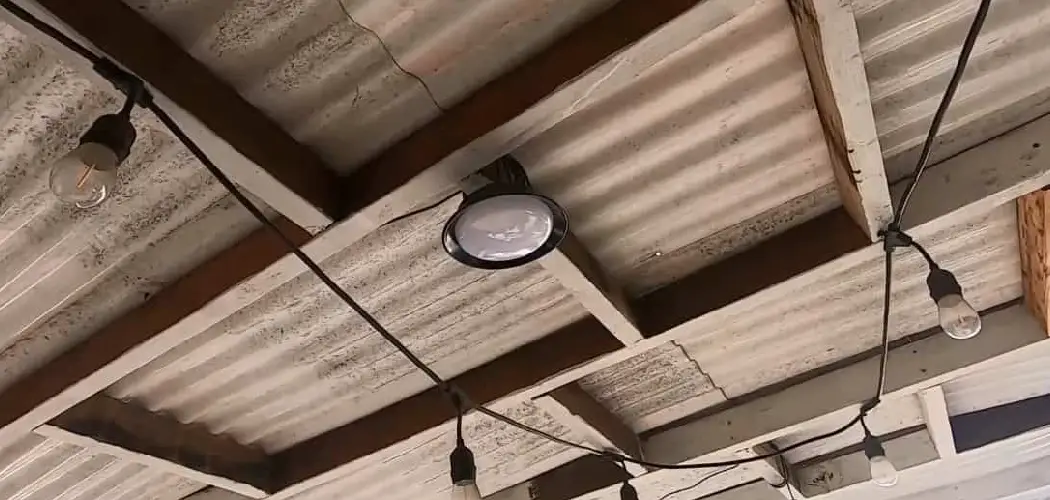If you’re looking for an easy and cost-effective way to bring natural light into your home or office, solar lights are the perfect solution. Not only do they provide soft illumination without relying on traditional electrical infrastructure, but they also require minimal maintenance and come in a variety of designs.

In this blog post, we’ll take a look at how to use solar lights indoors and explore the different types that are available. Whether you’re looking for mood lighting, task lighting, or just general ambiance, there is certainly an option that suits your requirements. Read on to find out more about this eco-friendly source of light!
What Are Indoor Solar Lights?
Indoor solar lights are a great way to save energy and add safety and security to your home. Solar lights use the power of the sun’s rays to generate electricity, which is then used to charge internal batteries and light up your indoor space. Because they do not require any wiring or an electrical connection, they can be installed almost anywhere in the home.
Indoor solar lights come in a variety of shapes, sizes, colors, and styles ranging from wall-mounted lanterns to decorative string lighting for festive occasions.
With proper maintenance, these lights have a long lifespan so you can enjoy their benefits for years to come. When choosing indoor solar lights for your home, it’s important to consider the level of brightness you need and the size of the area you’d like to light. Some lights are designed to be hung in a specific location, while others can be mounted on walls or ceilings for a more uniform lighting effect.
Additionally, it’s important to consider how often your indoor solar lights will be used and whether they will be exposed to direct sunlight during their operation. Once you have chosen the right lights for your needs, installation is relatively simple. Most indoor solar lights come with instructions that explain how to mount them correctly and set up their internal batteries.
It’s important to install these lights in areas where they will receive direct sunlight throughout the day so they can charge properly. If necessary, you may also want to purchase an outdoor timer to ensure your lights are always on when you need them.
With the right indoor solar lights, you can easily add stylish lighting to any room in your home while saving money and reducing your environmental impact. They’re perfect for creating a cozy atmosphere or adding a bit of decorative flair. Plus, unlike traditional wired-in lighting solutions, they can be moved and re-installed with ease!
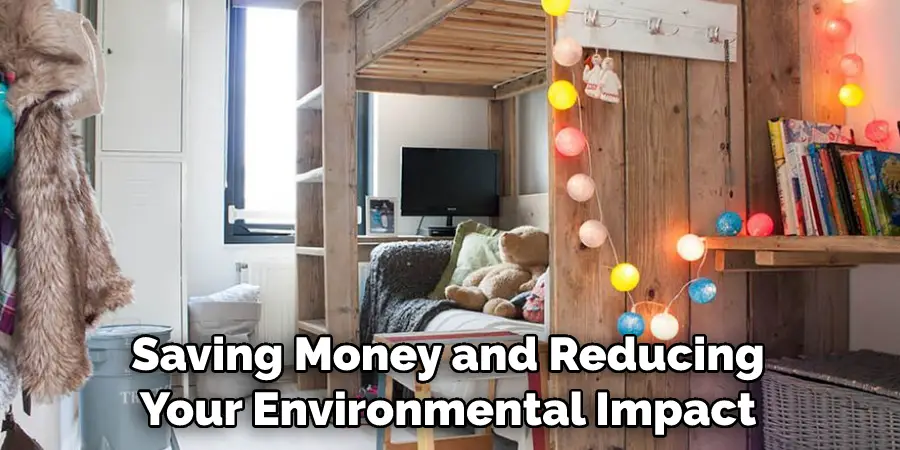
With a little research, you can find the perfect solar lighting setup for any indoor space – just make sure to follow all relevant safety instructions during installation.
10 Methods How to Use Solar Lights Indoors
1. Emergency Lighting
One of the most important uses for solar lights indoors is emergency lighting. If there is a power outage, solar lights can provide much-needed light. They can be placed in strategic locations such as hallways and stairwells to help people navigate their way around the home safely. Place a solar light near the door, so you can quickly locate it if you need to leave home in an emergency.
Just remember to charge your solar light with natural sunlight regularly to make sure it has enough energy stored up. If you have multiple solar lights, consider connecting them together with a power cord to ensure your home is always safe and illuminated.
2. Task Lighting
Solar lights can also be used for task lighting. This can be particularly useful in areas such as kitchens and bathrooms where extra light is often needed. Solar lights can be placed under cabinets or above mirrors to provide additional light for tasks such as cooking and grooming.
For best results, select solar lights that are dimmable to allow for adjusting the brightness level as needed. You may also want to choose a style with a directional head that can be tilted or rotated to focus the light exactly where it’s needed. If you’re using solar lights for a specific task, make sure to place them near an electrical outlet so that they can be charged when needed.
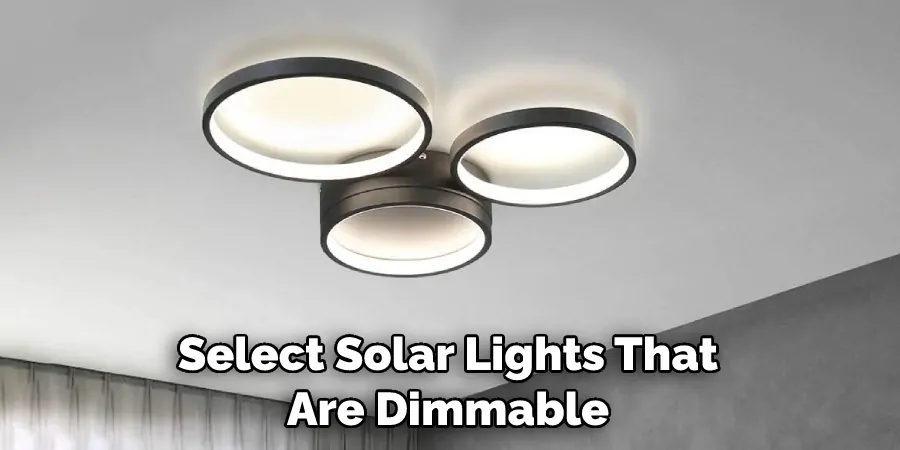
3. Reading Lights
Another great use for solar lights indoors is as reading lights. They can be placed next to chairs or beds to provide light for reading books or magazines. Solar lights are a great alternative to traditional table lamps as they do not require any electricity to operate.
Plus, they give off a warm and soothing light that can help to create a relaxing atmosphere. With solar lights, you can turn any room in your home into a cozy reading nook. While reading, you can easily adjust the angle of the solar light to focus directly where you need it. Solar lights are a great way to bring a little bit of natural light indoors and make it easier to enjoy a book in the comfort of your own home.
4. Mood Lighting
Solar lights can also be used to create mood lighting in a room. By placing them in strategic locations, they can help to set the tone of a room and create a particular atmosphere. For example, solar fairy lights strung around a window can give a room a warm and inviting feeling. You can even use colored solar lights to further customize the atmosphere.
Experiment with different lighting setups to find out what works best for your particular space. Keep in mind that solar lights don’t produce as much light as regular lighting fixtures, so think of them more as accent pieces rather than the primary source of light for a room.
5. Accent Lighting
Solar lights can also be used as accent lighting to highlight certain features in a room. For example, they can be used to highlight paintings or sculptures. They can also be used to accentuate the architecture of a room by placing them in alcoves or along cornices.

When using solar lights for accent lighting, it’s important to remember that the lights should be used sparingly. Too many bright solar lights can be distracting, so it’s best to choose one or two features to accentuate. Additionally, you should consider adding dimmer switches or motion sensors to the lights so that they do not remain on at full brightness all the time.
6. Security Lighting
Solar lights can also be used for security purposes. They can be placed outside of doors and windows to deter burglars and intruders. Solar-powered motion sensor lights are particularly effective at deterring criminals as they will turn on automatically when someone approaches the home. Additionally, solar-powered floodlights can be used to light up large areas of the yard or driveway.
For the greatest security benefits, choose lights that are motion activated and have adjustable sensitivities so that the lights will turn on even when the slightest movement is detected. To maximize the effectiveness of your solar security lighting, make sure that the lights are placed in visible and well-lit areas. This will help ensure that criminals are put off from targeting your property.
7. Garden Illumination
Solar lights can also be used to illuminate gardens or backyards. They can be used to light pathways and steps, making it safer and easier to move around outdoors during the night. Solar lights can also be used to provide accent lighting on flowerbeds, trees, and other features.
For best results, it is important to choose a solar light that will illuminate the desired area with sufficient brightness while taking into account the amount of sunlight available.
This will help ensure that the lights are charged adequately during the day and provide enough light during the night. However, solar lights must be placed in direct sunlight for at least 6-7 hours a day to work properly.
8. Signage
Finally, solar lights can be used for signage. They are a great way of displaying signs or banners without the need for electricity and can be used to make a real statement. Solar lights come with fixtures, which allow you to easily affix signage or banners and light the area up.
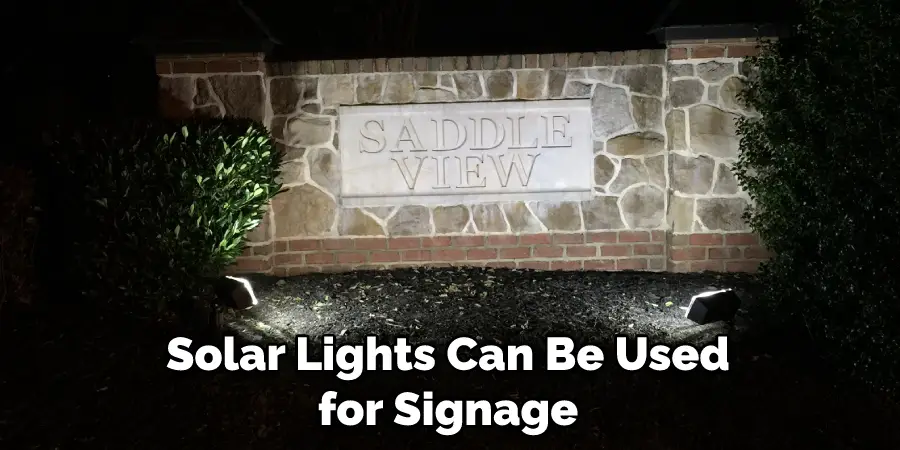
This can be used to great effect for marketing purposes and will make sure your message is seen by passersby. Solar lights are also a great option for lighting signs at night and can be used to draw attention to your business. So, if you’re looking for a creative way to get your message across, solar lights are a great option.
However, it is important to make sure they are securely affixed and that the signage or banners are durable enough to withstand wind and rain. Additionally, try to position the lights and signs in a way that maximizes visibility.
9. Ornamental Lighting
Solar lights can also be used to add ornamental lighting. Suitable for both interior and exterior use, they can be used to highlight features of your home, such as plants, artwork or statues. Place the light near the subject that you want to be illuminated and enjoy the subtle lighting effect.
Make sure that the lights are placed in an area with enough sunlight so they can charge properly. With the right placement, solar lights can provide a unique and beautiful look to your home. While they are not as bright as other types of lighting, they can create a stunning and eye-catching effect. Additionally, solar lights come in different shapes and sizes, so you can choose the perfect one to match your home decor.
10. Christmas Lights
Solar lights can also be used to decorate during the festive season. They are an excellent alternative to traditional Christmas lights as they don’t require a power source and are much more energy-efficient.
Hang them around your windows, on the tree or up in the eaves to create a magical effect. While there are a variety of solar Christmas lights available, choose LED ones for the best performance.
You can also find sets that come with a timer so you can set them to come on and off at specific times.
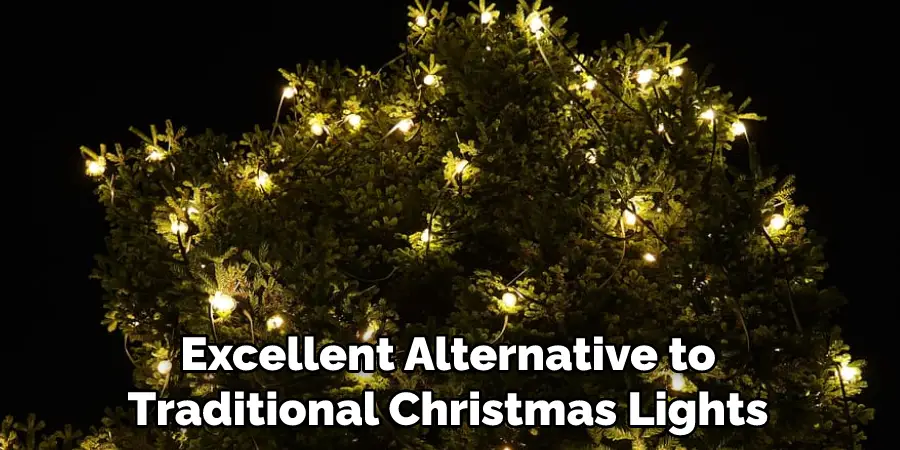
However, bear in mind that solar Christmas lights won’t be as bright as the traditional ones. If you want to use them outdoors instead, make sure to only use solar-powered lights that have been specifically designed for outdoor use.
Things to Consider When Using Solar Lights Indoors
1. Placement:
Solar lights should be placed near windows and areas with plenty of natural light to ensure that they get sufficient sunlight during the day. You may also want to consider putting them on a timer in order to maximize the amount of energy generated and stored.
2. Batteries:
Solar lights come with rechargeable batteries that will need to be replaced after a certain amount of time. Make sure to check the manufacturer’s instructions for details on when and how to replace them.
3. Safety:
It is important to make sure that your solar lights are secured properly, as they can become a fire hazard if left unsecured. Additionally, be sure to keep your solar lights away from any flammable materials to avoid the risk of a fire.

4. Maintenance:
Solar lights require regular maintenance in order to keep them working optimally. This includes cleaning them often to ensure that the panels are free of dust and debris. Additionally, you should inspect your solar lights regularly for any signs of wear or damage.
By following these simple tips, you can safely and effectively use solar lights indoors. They make a great energy-efficient and cost-saving alternative to traditional lighting solutions.
Conclusion
In conclusion, using solar lights indoors is a great way to not only save energy and money, but also to enjoy the beauty of natural light. From plug-in solar lights that provide instant illumination to furnished lamps that bring warmth and sophistication into living rooms, solar lights are here to stay when it comes to efficient home lighting solutions.
We hope this guide on how to use solar lights indoors was helpful. Please share it with your friends on social media if you find it useful. And be sure to check back here soon for more informative guides like this one.

